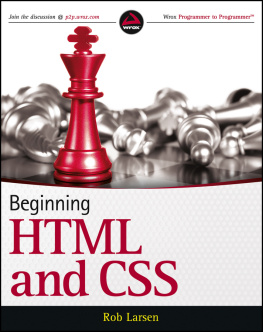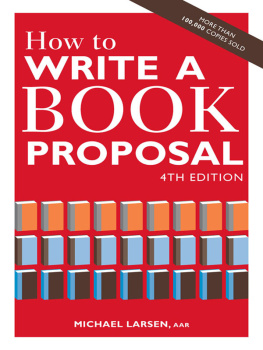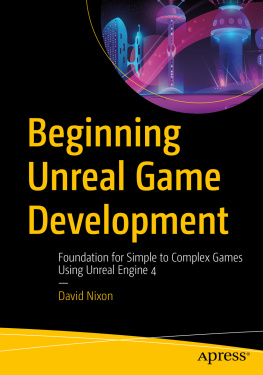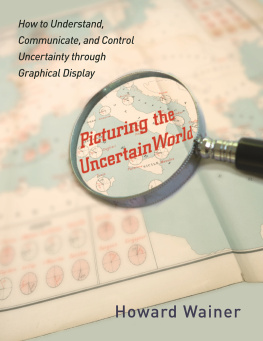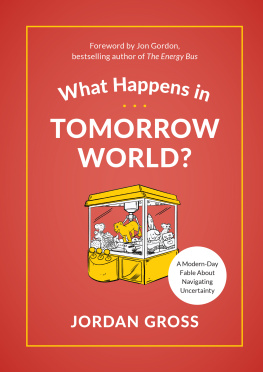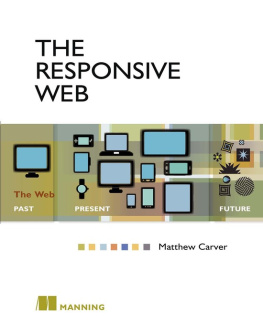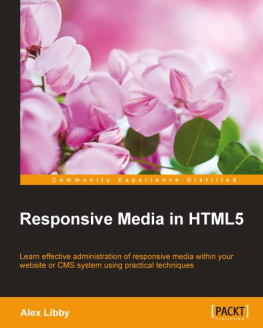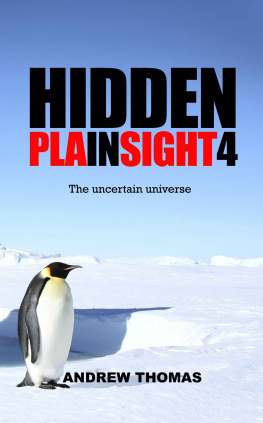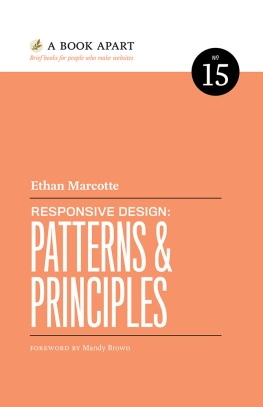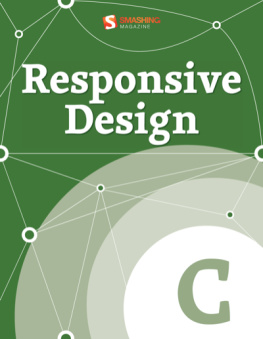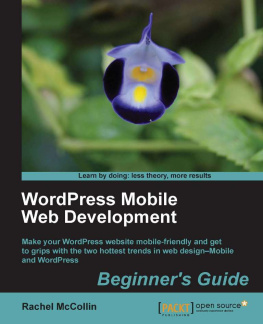Larsen - The Uncertain Web
Here you can read online Larsen - The Uncertain Web full text of the book (entire story) in english for free. Download pdf and epub, get meaning, cover and reviews about this ebook. City: Sebastopol;CA, year: 2015, publisher: OReilly Media, genre: Home and family. Description of the work, (preface) as well as reviews are available. Best literature library LitArk.com created for fans of good reading and offers a wide selection of genres:
Romance novel
Science fiction
Adventure
Detective
Science
History
Home and family
Prose
Art
Politics
Computer
Non-fiction
Religion
Business
Children
Humor
Choose a favorite category and find really read worthwhile books. Enjoy immersion in the world of imagination, feel the emotions of the characters or learn something new for yourself, make an fascinating discovery.
- Book:The Uncertain Web
- Author:
- Publisher:OReilly Media
- Genre:
- Year:2015
- City:Sebastopol;CA
- Rating:5 / 5
- Favourites:Add to favourites
- Your mark:
- 100
- 1
- 2
- 3
- 4
- 5
The Uncertain Web: summary, description and annotation
We offer to read an annotation, description, summary or preface (depends on what the author of the book "The Uncertain Web" wrote himself). If you haven't found the necessary information about the book — write in the comments, we will try to find it.
The Uncertain Web — read online for free the complete book (whole text) full work
Below is the text of the book, divided by pages. System saving the place of the last page read, allows you to conveniently read the book "The Uncertain Web" online for free, without having to search again every time where you left off. Put a bookmark, and you can go to the page where you finished reading at any time.
Font size:
Interval:
Bookmark:
The best way to approach the Web today is to forgo hard-and-fast rules and design for uncertainty. Embracing uncertainty as a core tenet of web development and scrapping the rules weve relied on in the past few years is the best bet for creating future-proof web solutions.
In the early 2000s, there was basically one browser (Internet Explorer 6), one platform (Windows XP), and one screen resolution (1024 768) that mattered. With that setup, you could design, develop, and test the vast majority of web users with one desktop computer. The biggest question on the horizon, it seemed, was when it would be viable to design for 1280-pixel screens.
This limited field of play meant that there was an expectation that sites and applications would look the same everywhere for everyone. Best practices were honed and codified into hard-and-fast rules that drove design and development. Major choices, such as the size of the basic design grid, were no longer choices . Everyone started with a static, 960-pixel grid and then sliced and diced it as needed.
Today, things couldnt be more different. With the launch of the iPhone and the iPad, the rise of Android, and the growth of not just one but two real contenders to Microsofts position as the dominant desktop web browser (Firefox and Chrome), developers and designers have an ocean of variables to navigate. Every question around a site design is now filled with options.
Initially, developers and designers tried to navigate this new reality by creating new rules. But the problem was that the goalposts kept moving. As soon as a new hard and fast rule was created, some new wrinkle would render it impotent. People designed and built iPhone sites, assuming that Apples dominance in the smartphone market was a permanent condition. They tested for touch capabilities and assumed that touch users would never have a mouse.
As Androids huge growth over the past few years, and the presence of Chromebooks and Windows 8 laptops with both mouse and touch capabilities have proved, those new rules have a short shelf life.
Even patterns like responsive web design (RWD), which some saw as a single solution for design and development moving forward, fell apart when applied against complicated application patterns and the questions of bandwidth and the challenge of mobile performance.
By combining web standards, progressive enhancement, an iterative approach to design and development, and a desire to question the status quo, teams can create sites and applications that should perform well in a wide range of present and future devices. By focusing on optimal solutions with intelligent fallbacks and forgoing the desire for absolute solutions, design and development can work together to create a Web that is fast, widely available, and reliable.
This book will outline both the concept and underlying principles of the uncertain Web and introduce some of the techniques necessary to make the successful transition.
The evolution of the Web as a development platform and the incredible growth in the number of web-enabled devices has pushed the Web into places it could never have reached before. In the past decade, weve gone from a stagnant platform with a handful of browsers and operating systems connecting to the Web to a vibrant, Open Web Platform serving a dizzying array of browsers and devices.
Thats the big picture.
The thing is, most of the time, front-line developers dont get to spend time looking at the big picture. You know how it isits usually a challenge just getting the next release out the door. Whether youre building a site for a client, working on the latest version of your JavaScript framework, or simply trying to make sure people can read the text on your blog, theres not a lot of time available to muse about the way the Web as a whole has changed. Instead, you focus on solutions to individual problems, because those are the ones keeping you from going home at a reasonable hour. Even folks who are tasked with keeping track of the big trends can get sidetracked by specific storms that pop up. Its hard to keep your eye on the big picture when youre watching 10 (long!) emails an hour come through on a standards topic youre following with interest.
Thats where this book comes in. Judging by the conversations I see on GitHub, StackOverflow, Twitter, and IRC, it seems like people dont really think about how fundamentally the Web has changed. Whether its searching for the perfect test to detect a mouse user versus a touch user or designing a responsive site for the perfect set of media query breakpoints, there are many developers still trying to hammer out absolute rules and rigid best practices. People are clearly looking to develop sites and applications within clearly defined boundaries.
Although that can be a comforting idea and was once possible, those days are long gone. Its time for a new approach.
The quote from Yehuda Katz at the beginning of the first chapter, sums up, cleverly, two of the threads that youll see throughout the book. Flip ahead and check it out, or read it live on Twitter.
Hopefully, when youre done with this book, youll be doing less crying .
Todays Web is a wild place. The Web has never been a static platform, no matter how much people might wish it were so. You just cant control whos going to request your content. You cant control the browser or device theyre using, and you certainly cant guarantee things like the operating system, screen resolution, bandwidth, or available system fonts. For developers coming from pretty much any other discipline, the number of things that are out of the developers control can be mind-boggling. That statement will only grow more true with every passing day. Standards are changing on, in some cases, a daily or weekly basis, new devices are coming online at a furious pace, and browser vendors are going at it tooth and nail to innovate their way to the top of the league tables. With an ecosystem like that, trying to collapse everything you do as a developer into something that can fit into a neat little box is a recipe for frustration. Embracing the ecosystem for the wild mess that it is and developing with an eye toward the uncertainty the Web will throw at you is the best way to reach whomever might want to get at your site or application with whatever they have in their pocket or on their desktopnow and in the future.
The tools to do this are already here; you just need an adjustment in the way you view the Web and the way you develop for it.
The primary audience is intermediate to advanced web developersthe folks on the front lines of dealing with these issues on a day-to-day basis and those who serve as the main channel for new frontend development techniques and trends to make their way into organizations. This book is geared toward developers who work primarily in HTML, CSS, and JavaScript and who have a solid understanding of cross-browser (if not cross-form-factor or cross-device) development techniques.
The secondary audience consists of user experience designers, web-focused visual designers, and web-focused engineers from other programming disciplines. To properly build for the modern Web, there needs to be cohesion in site design and architecture from start to finish. The material here should familiarize other disciplines with the best way to approach designing and developing for the present and future of the Web. As a natural bridge between design and the server, the core web developer is always going to be the glue that binds this process together, but having everyone on board will help improve the finished product.
Font size:
Interval:
Bookmark:
Similar books «The Uncertain Web»
Look at similar books to The Uncertain Web. We have selected literature similar in name and meaning in the hope of providing readers with more options to find new, interesting, not yet read works.
Discussion, reviews of the book The Uncertain Web and just readers' own opinions. Leave your comments, write what you think about the work, its meaning or the main characters. Specify what exactly you liked and what you didn't like, and why you think so.


